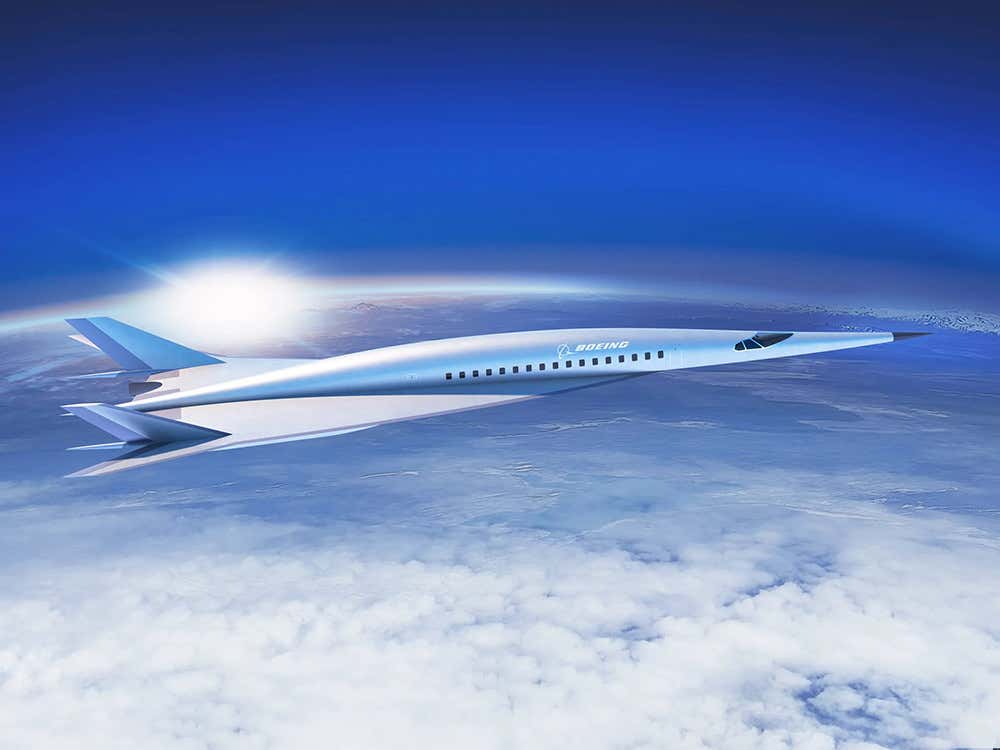US aerospace giant Boeing has unveiled a model of what is believed to be a reusable hypersonic aircraft. Although coming as a surprise, it is not completely a new concept given Boeing’s previous experiments with hypersonic technology.
Chinese Space Station: Why US Remains ‘Highly Apprehensive’ Of Tiangong & Fears Ceding Military Edge To Beijing
At a recent symposium, Boeing demonstrated a new model of a possible reusable hypersonic aircraft. According to the company, the design is an extension of concepts that were initially shown publicly four years ago and might have military and commercial applications, such as a space launch.
Senior Editor Norris of Aviation Week spotted the model at the annual AIAA SciTech Forum and Exposition in San Diego, California, and shared photos of it on Twitter. So far, there isn’t much concrete information available on the said model.

Four years after first unveiling its hypersonic airliner concept at #AIAASciTech 2018 @Boeing has revealed a refined, more realistic Mach 5 reusable air-breathing design targeting military and space launch roles at @aiaa San Diego event pic.twitter.com/CtpxA5OJGn
— Guy Norris (@AvWeekGuy) January 4, 2022
Earlier in 2018, Boeing had unveiled a notional hypersonic aircraft called Valkyrie. The new design was an iteration of the Valkyrie concept, which was revealed at the 2018 SciTech Forum, Norris tweeted. He described it as “an improved, more realistic Mach 5 reusable air-breathing concept aimed at military and space launch tasks.”
UK Joins The Hypersonic Bandwagon; Pledges Billions Of Pounds Amid Chinese, Russian ‘Muscle Flexing’
The approved hypersonic speed limit is Mach 5 — five times the speed of sound.
Boeing previously has considered a reusable hypersonic platform for launching payloads into space as an alternative to standard space launch rockets.
In 2020, Australian firm Hypersonix and Boeing Research and Technology (BR&T) had agreed to perform research into a reusable space launch vehicle using the SPARTAN reusable scramjet, as previously reported by Space Australia.
The US Defense Department too had resurrected Boeing’s chances for a near-term success in the hypersonic weapons market by allowing it to join a competition to produce a Mach 6 cruise missile and reviving a decade-old proposal based on dual-combustion ramjet technology.
Boeing’s Hypersonic Aircraft
The new hypersonic aircraft is very identical to the notional one that it showcased in 2018. However, the difference is that the middle fuselage is flatter, while the wings and twin tails are shorter.
Japan-Australia Defense Partnership To Give A Significant Boost To Larger QUAD Strategy Against ‘Notorious’ China
Two engines underneath the fuselage have been repositioned, now being enclosed behind two separate fairings rather than side-by-side.
It’s unclear what kind of engines Boeing will use to power this plane, although the corporation has already experimented with innovative high-speed jet engines such as scramjets and “combined cycle” technologies. Traditional jet turbines are paired with ramjets or scramjets in a turbine-based combined cycle (TBCC) engine arrangement.
Boeing’s introduction of its hypersonic design in 2018, on which the recent one is based, was perceived as a response to Lockheed Martin’s projected hypersonic military aircraft, the SR-72, according to Interesting Engineering.
Boeing’s Hypersonic Prospects
The presentation of Boeing’s hypersonic aircraft model at the AIAA conference coincides with the US Air Force’s announcement of Project Mayhem.
China’s Engineering Marvel: Country’s ‘Stunning Lake Tunnel’ – The Longest In China – Opens For Traffic
The Mayhem hypersonic air vehicle program is expected to offer a modular experimental design that may be configured to carry one of two types of payloads for strike missions, or a sensor package for conducting “responsive” intelligence, surveillance, and reconnaissance, or ISR, sorties, as reported by the EurAsian Times.
A couple more detailed images of newly unveiled @Boeing Mach 5 reusable hypersonic concept at #AIAASciTech here in San Diego pic.twitter.com/Dp4RQJ2tYJ
— Guy Norris (@AvWeekGuy) January 4, 2022
Boeing, of course, has a long history of doing such designs for a variety of uses, including high-speed airliners and military platforms. But Boeing isn’t the only company to consider a reusable hypersonic platform for launching payloads into space as a replacement for standard space launch rockets.
More details of this proposed aircraft will emerge as and when Boeing decides to share it officially in the public domain.
- Contact the author at sakshi.tiwari9555@gmail.com
- Follow EurAsian Times on Google News